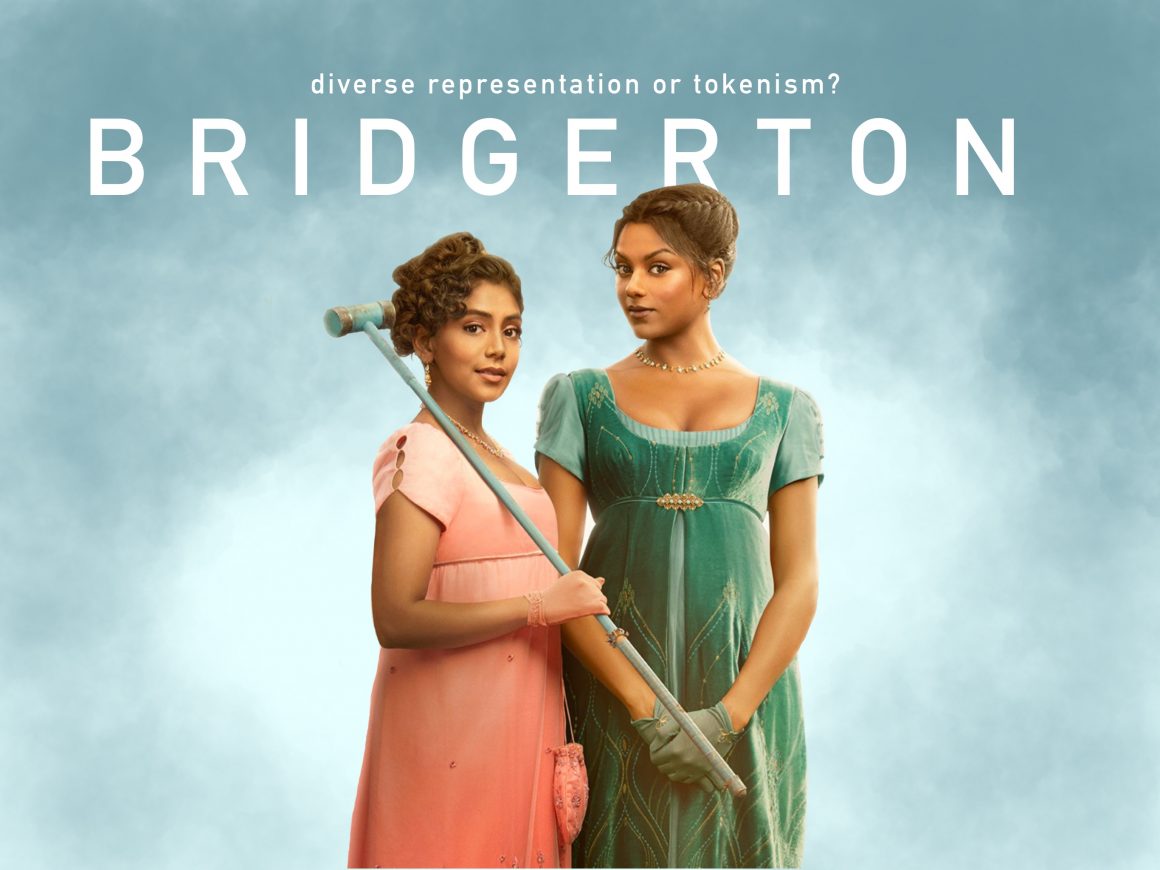
Bridgerton season two: Diversity or tokenism?
By Aymen Sherwani, April 24 2022—
The question of whether the South Asian representation in season two of Netflix’s Bridgerton veers closer to diversity or tokenism is a complex one. On the one hand, Twitter is in an absolute uproar about the technical and cultural discrepancies surrounding the identities of the Indian protagonists, Kate and Edwina Sharma. One user comments “I love when Bridgerton tries to be ”inclusive” and ends up with kate calling edwina bon (sister in bengali), they both call their father appa (father in Tamil) and their surnames are Sharma (common mostly north Indian surname) [sic].”
Personally, I too was a little taken aback by the show’s referral to the Hindi language as ‘Hindustani’ — which is the nationality — and questioned why the show seemed to completely look over the very real and very violent aspects of British colonialism in India. It’s important to take into consideration that a large bulk of the wealth and splendor that the Regency and Georgian eras are remembered for are due to colonial exploits from India — particularly the silks and jewels that the women of the time adorned.
Taking the historical relationship between Britain and India into account, it is a little unsettling to watch a show that reimagines an escapist relationship between the colonizer and the colonized, minus the oppression.
At the same time, relationships between Indians and Britons during the 1800s were not uncommon, especially those which solidified economic prospects within the upper echelons of the aristocratic societies of both countries. At the end of the day, when the question of whether Bridgerton’s casting of two Indian women is diversity where it’s not needed — I would disagree. It was very sorely needed.
Many South Asians, such as myself, live in a post-colonial reality. What this means is that the legacies of colonialism and white supremacy remain deeply ingrained in the minds of other South Asians, manifesting themselves through notions of colourism. White skin is the standard of beauty in South Asian societies, despite the large bulk of the community having darker complexions, and being tanned is often the cause of bullying and harassment.
Obviously, living in Canada provides a certain level of distance from such a mindset, but an issue that is increasingly prevalent in diasporas located in the Global North is the preference of white women — the beauty standard — over South Asian women.
I’m thinking of the likes of Shake Chatterjee from Netflix’s Love is Blind and his comments about preferences for white, blonde women on top of making incrEdibly desexualizing comments about his on-screen partner, Deepti — the only other Indian person on the show — by comparing her to his aunt. Dehumanizing statements like these reinforce perceptions surrounding women of colour as undesirable due to their features, but Bridgerton subverts this in what I think is the best way possible.
The presence of characters like Kate and Edwina Sharma on such a large platform is significant for a number of reasons, the first being that this is probably the first time South Asian women are seeing themselves being portrayed as not only desirable — but the most desirable in the room.
Edwina Sharma is referred to as the “diamond of the season” — the most beautiful debutante of the English social season — and is played by Charithra Surya Chandran, a British actress of South Indian heritage.
Kate Sharma, the other main love interest, also has a South Indian Tamil background. Casting darker skinned actresses to be love interests instead of villains is something that the Indian film industry itself is still struggling to overcome due to the aforementioned struggles with colourism and white supremacy. To see someone represent you with overtly ethnic features — without the blue contacts, bleached hair and kowtowing to the rhetoric of “whiter is better” — is refreshing in itself.
Positive representation is something white people take for granted. I did not expect myself to become emotional when I saw the main characters wearing traditional Indian jewelry and silks, braiding and oiling their hair, throwing around witty quips in Hindi or applying haldi — but I did.
I did not expect to hear the male protagonist endearingly refer to Kate Sharma by her Indian name — Kathali Sharma — when I have heard South Asian names being mocked for most of my life. I did not expect him to say that the way she smells was irresistible when a popular stereotype against Indians is that they smell bad.
And when the classical version of Kabhi Khushi Kabhi Gham played, for a fleeting moment, we were able to conceptualize a world in which conventions of racism and colourism made no difference in romance.
Escapist or not, what the Bridgerton fantasy does masterfully here, in my opinion, is normalize the presence of people of colour in the predominantly white historical genre. That in itself is a massive leap forward for women of colour that struggle with conceptualizing themselves as beautiful in a world where everyone tells them that they are anything but that.
This article is a part of our Voices section.
